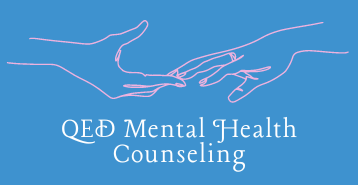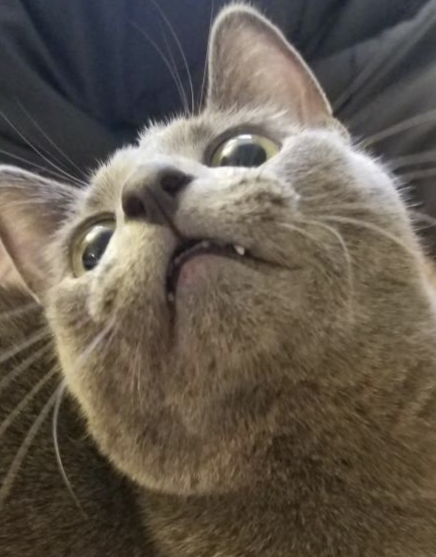How OCD’s Gold Standard therapy works, and examples of what it can be like to experience as a patient
Most patients who experience obsessive thoughts or worries find themselves compulsively reacting to them with ritual behavior or mental processes that offer a sense of control or relief. The anxiety we feel is so significant that it seems impossible not to perform these behaviors as they are the only thing which seems to sooth them. Most people with OCD are fully aware that logically tapping a door three times isn’t going to make a difference whether or not their loved ones are safe, but that doesn’t make it any less terrifying when the anxious brain whispers, “but what if you don’t tap it and then something bad happens to your mom?”
In the OCD haver’s defence, there’s a reason we fall prey to these compulsive patterns. In the short term, it absolutely “works” to reduce anxiety. We get back a sense of control and peace that, no matter how artificial it is, makes a substantial difference in how anxious we are. It’s not some wildly insane and pointless behavior, the physical or mental compulsions get results. Unfortunately, the more we continue to do those compulsions the stronger the anxiety when we aren’t able to, and the more stuck we feel in the OCD cycle of obsessive thought -> anxiety -> compulsion -> brief calm -> obsessive thought.
What’s ERP and where does it come in?
Exposure and Response Prevention (sometimes called Exposure and Ritual Prevention in clinical literature) is a treatment designed to help those of us with strong anxiety-related beliefs or worries stop perpetuating the behaviors that worsen our condition. It’s incredibly effective, with a whopping 80% of OCD patients seeing improvements (Foa, 2012). 80% is much higher than most other treatments for OCD offer, but since facing your fears is a generally scary concept many will avoid doing ERP and remain trapped in the OCD cycle. With ERP, you can learn to put delays, limits, replacements, and/or eliminate certain behaviors altogether. You can learn that anxiety is not only regulated by following OCD’s commands in search of scant relief between bouts of fear.
When people think of Exposure Therapy they tend to call to mind something more akin to Fear Factor- a man with a phobia of spiders who is sobbing as he’s forced to sit in a tank full of them, for example. While this would technically count as ERP if you threw some psychologically prudent limits and controls into the mix, most ERP is not simply throwing you right into the middle of your worst nightmares.
ERP requires a systematic, timed, repeated, and ideally therapist-led provoking of obsessional fears. Instead of falling into the usual anxiety behaviors that make things worse (avoidance, over-preparing, rumination, distraction, etc.), the patient learns they can tolerate their anxiety and calm down even if they don’t do the usual things to sooth them.
First, the therapist will go over your daily rituals and obsessions to see just how much OCD interferes with your day to day life, and then you both will create a graded exposure list so you can start at an accessible level of anxiety tolerance. You and your therapist can monitor the anxiety using a scale system called SUDs (Subjective Units of Distress, usually as a 1-10 or 0-100 scale) to track each exposure and how your tolerance grows over time as the fear extinction process occurs.
You can do Exposures in a few ways:
In Vivo Exposures: these would be real life scenarios, like touching a public bathroom door handle or holding a knife against a loved one’s arm, or any other situation where you are intentionally finding triggering stimuli in your environment to interact with. It’s a useful method when you have a lot of physical or behavioral OCD where you either are or aren’t doing something to raise your anxiety.
Imaginal Exposures: I like to describe these as “writing fanfiction about the worst day of your life.” It involves imagining catastrophic outcomes, worst fears, leaning into the intrusive imagery of those feared results you’re constantly trying to avoid. Great for types like Sexuality related OCD where in-vivo exposures can’t be participated in without causing someone actual harm (pedophilia, bestiality, incest, etc) but still is upsetting enough to trigger your anxiety response and let you practice whittling down the distress so you aren’t trapped in the OCD cycle.
Interoceptive Exposures: This refers to intentionally causing non-harmful physical sensations that might be linked to fears or distress. People who obsess over swallowing or breathing a certain way might be asked to intentionally do those things in a triggering manner. Or racing up and down steps to feel your heart rate increase and then deal with the OCD thoughts that insist any cardiac sensation must be a heart attack.
An Example of ERP for Harm OCD
Harm OCD is when your obsessive thoughts tend to focus on harm befalling you or your loved ones. Sometimes people worry that they will intentionally cause the harm (‘what if I go crazy and put my pet in the oven?’), indirectly cause harm (‘what if I left the stove on and my house burns down with my family inside?’), and others believe they are preventing the harm (‘by checking the front door lock I can make sure nobody is able to get in and hurt my family’).
It commonly features intrusive thoughts or images related to violence against yourself or others, leading the person suffering from it to worry.
Our example Patient, let’s call him Road-Riddled Rodney, spends most of his day terrified he’s accidentally hit someone with his car and either not noticed or forgotten it happened. Rodney spends long minutes before and after work checking his tires and car body for blood, if he hits a bump on a road he feels intense panic and has to look behind him or stop, and when he isn’t in a car he’s going through old memories searching for harm he caused in the past.
Living like that is not only exhausting, it’s incredibly time consuming and greatly reduces your quality of life. ERP for Rodney and his Harm OCD, alongside how hypothetically distressed he and the therapist believe it will make him (measured with SUDs again) might look like this:
- Not checking the tires for blood after a drive with no bumps (SUDs 3 out of 10)
- Visualizing hitting someone with a car and only injuring them a little (SUDs 5 out of 10)
- Visualizing hitting someone with a car and killing them (SUDs 7 out of 10)
- During therapy, talking out a worst possible outcome for hitting someone with a car (SUDs 4 out of 10)
- Writing triggering statements like “I will hit someone with my car and kill them today, and it will ruin my life” (SUDs 6 out of 10)
- When driving and hitting a speed bump, he will not stop to look back or examine his tires after (SUDs 8 out of 10)
- Having a friend put fake blood on your tires and then staring at them after a bumpy drive (SUDs 9 out of 10)
Rodney will then commit to trying one of those, usually the one with the lowest SUDs to start, and the therapist will assist in locating barriers, safety behaviors, or other factors that lower the chances of exposure being effective in gaining habituation and fear extinction.
This is just one of many many different examples of how ERP might look for someone. The best ERP is collaborative, with the patient and therapist working to find something that feels accessible and tolerable understanding that it will take practice and support to achieve the desired treatment outcome.
You’ll definitely want a therapist who is very familiar with ERP, as many shy away from this treatment method because it’s not particularly enjoyable for anyone during the process. When I was doing ERP for my OCD it wasn’t pretty. I did a lot of crying and panicking and dreading, but I also had moments of great satisfaction and confidence when I finally conquered things that had entirely disabled me from functioning previously. It’s hard work, but all good therapy tends to be. For both the patient and the therapist it’s a team effort to tackle your fears and finally live a life that isn’t dictated by arbitrary anxiety rules that consume your every waking moment.
Final Verdict
ERP isn’t the only therapy available for OCD, and personally I don’t believe a strict ERP-only approach is a one-size-fits-all treatment method. I always mix other aspects of CBT, ACT, DBT, and MI into my ERP because people are just as varied as their symptoms and concerns. If you aren’t up to doing ERP there are still options, but ERP would easily be my first suggestion for those struggling with OCD, Generalized Anxiety Disorder, Phobias, and some types of PTSD.
Was doing ERP fun or easy for me as an OCD patient? Generally, no. Was it effective? Unfortunately, YES it really was! If I had a way of avoiding any perceived fears, harms, or dangers that still got rid of my OCD I would be delighted to offer it to my patients- but nothing I’ve tried personally, and professionally, has ever been as effective for OCD as Exposure and Response Prevention.
Sources/Learn more:
Foa, E. B., Yadin, E., & Lichner, T. K. (2012). Exposure and response (ritual) prevention for obsessive-compulsive disorder: Therapist guide. Oxford University Press.
Craske, M. G., Kircanski, K., Zelikowsky, M., Mystkowski, J., Chowdhury, N., & Baker, A. (2008). Optimizing inhibitory learning during exposure therapy. Behaviour Research and Therapy, 46(1), 5–27. https://doi.org/10.1016/j.brat.2007.10.003
Foa, E. B., & Kozak, M. J. (1986). Emotional processing of fear: Exposure to corrective information. Psychological Bulletin, 99(1), 20–35. https://doi.org/10.1037/0033-2909.99.1.20
Pinciotti, C. M., Bulkes, N. Z., Bailey, B. E., Storch, E. A., Abramowitz, J. S., Fontenelle, L. F., & Riemann, B. C. (2023). Common rituals in obsessive–compulsive disorder and implications for treatment: A mixed-methods study. Psychological Assessment, 35(9), 763–777. https://doi.org/10.1037/pas0001254


Comments are closed